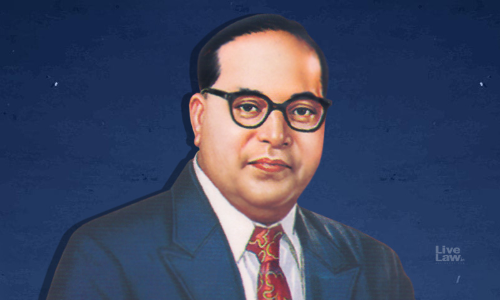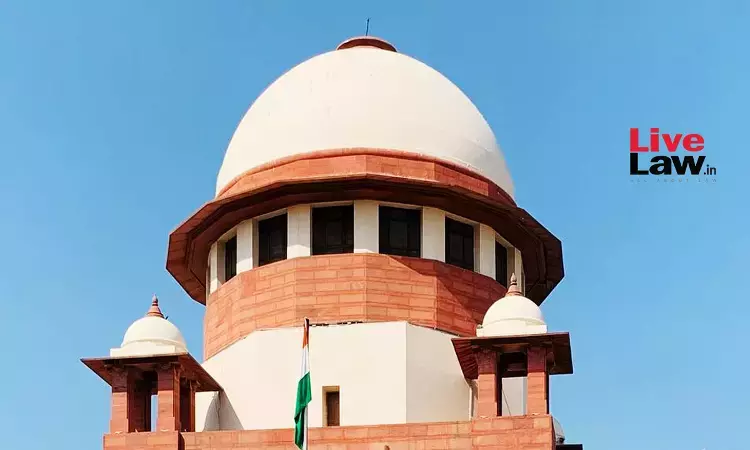
India has often wondered why it is not the hub of arbitration and has brought about multiple amendments to meet this aspirational target. However, part of the problem is not only the law, which is being addressed by amendments, but is also the lack of professionalism by every single person who is participating in the process. This lack of professionalism, which makes the process...
India has often wondered why it is not the hub of arbitration and has brought about multiple amendments to meet this aspirational target. However, part of the problem is not only the law, which is being addressed by amendments, but is also the lack of professionalism by every single person who is participating in the process. This lack of professionalism, which makes the process cumbersome and time consuming, leads to disillusionment for the litigant and sends the wrong signal internationally. Litigants are thus reluctant to choose India as the seat of arbitration. This practice has to change to mirror internationally accepted practices and to make arbitration a lot more effective and efficient.
The mechanism sought to be adopted in a domestic arbitration:
An arbitration generally begins with a dispute between two or more parties. This dispute eventually leads parties to a negotiation as per the arbitration agreement and if negotiations do not make any headway, a party to an arbitration agreement accordingly sends a notice for invocation[1]. Consequently the parties appoint arbitrators either mutually or with the assistance of the High Court[2] or in the case of a 3 member tribunal, by nominating their respective arbitrators, who then appoint a third arbitrator.
Upon the constitution of the Tribunal, in the case of an ad-hoc arbitration, in the first hearing, timelines are decided by the parties to file the statement of claim, the statement of defence, the counter claim, the respective rejoinders[3] and the affidavit of admission and denial. On the basis of the pleadings and the affidavit of admission and denial, a date is fixed for framing of issues. If an application for challenging the jurisdiction of the Tribunal[4] is not filed (which is to be heard preliminarily), on the date agreed to by the parties, issues are framed and the parties can elect whether to lead evidence solely on documents or whether oral evidence with cross examination to follow[5]. Once such an agreement is reached, evidence is led followed by cross-examination. At times, multiple dates are given for this purpose. After this stage, the matter is listed for arguments and for consequent orders/award[6].
Problems faced presently in domestic arbitrations:
The mechanism set up above looks particularly simple and thus, on first blush, it seems that the timeline to complete the process of arbitration is easily achievable within a period of 1 year. However, this is never the case. The first problem that one experiences is that the time line for completion of pleadings is seldom complied by the parties. The attitude is that the Tribunal would grant an extension, if the either party overshoots the deadline. This attitude stems from the fact that the Tribunal is required to grant "full opportunity" to a party "to present his case".[7] It is not understood by the parties that overshooting the deadline implies that the entire set of agreed timeline go completely awry.
The second problem is that once pleadings are filed, a flurry of applications follows including applications for discovery and production. Thus, until the issue of production is decided, the proceedings cannot go on. Hence, on the agreed dates of hearing for framing of issues, parties dilate on either the aspect of filing further pleadings, because they have overshot timelines, or on the issue of production and discovery of documents. This is then followed by a request to file a reply to the application for production and a fresh set of dates are fixed for the purposes of adjudication of the application. Thus, the agreed dates for framing of issues and evidence get derailed.
Assuming that the application for production is allowed, after detailed hearing, and production is directed, a date is fixed for filing the documents ordered to be produced. Once again, timelines are not complied by and extension is sought as a matter of right. By this time, the originally agreed timelines undergo a complete sea change.
There are also instances where parties file applications for interim relief, either before or after filing the pleadings. This is not factored into the agreed timelines between the parties. Adjudication of this application for interim relief, sometimes over multiple hearings, lead to the Tribunal fixing a fresh set of dates.
Once the pleadings and filing of affidavits of admission and denial are complied by, a date is fixed, with the consent of the parties for framing of issues. After framing of issues, the parties agree to a fresh set of timelines, which are convenient to all concerned. Though multiple dates are given for evidence, owing to the busy schedule of the lawyers and arbitrators, these dates are sometimes given after several months.
On the agreed date of hearing unfortunately, the witnesses are not available, at times, lawyers are not completely ready with cross examination, arbitrators reframe questions sought to be put to witnesses by the counsels and the questions take time to be typed out contemporaneously by the stenographer, engaged for the purposes of evidence. Resultantly, time is wasted and the dates fixed for evidence are overshot and a fresh set of dates are given. The Tribunal thus takes several months to reconvene (and in case of a 3 member Tribunal it takes longer) and the same issue is faced with further cross-examination.
Similar is the issue with final arguments. Though convenience volumes are filed, final arguments take particularly long to conclude as the counsel for either party labours through the volume filed for convenience, reading each and every document which can and ought to be avoided.
Finally, after hearing the parties at length and receiving written submissions, after a period of 2-6 months, awards are pronounced. Imperfect recollection of arguments coupled with significant lapse of time and other issues result in errors on facts. Each of the above factors, whether individually or cumulatively, result in fundamental blunders on facts, which would and should have been otherwise avoided.
All of the above issues are explained to the litigant with a shrug of the shoulders and with an explanation that atleast some headway is made. The ramification of each of the above is that multiple extensions have to be sought, which arrogates against the fundamental reason why the provision for timelines was introduced in the first place.
Internationally accepted efficient practices should be adopted:
At the time of invocation of arbitration, each party knows and/or is cognizant of their respective cases, the strength of their cases and the issues would they would be confronted with. Accordingly, after appointment of the arbitrator, instead of waiting for framing issues after filing of pleadings, issues could be framed at the stage of first hearing. The pleadings of the respective parties thus could be tailored to suit these issues, giving greater clarity to the parties and the arbitrator of the respective cases.
Secondly, the parties could be informed, in advance, that they could agree to non derogable timelines amongst themselves, subject to predetermined costs, and time could be given to the parties to agree on these timelines. Heavy costs would deter parties from wavering from agreed timelines. In case of an institutional arbitration, a fixed format ought to be adopted to ensure this. If there are any points of disagreement between the parties, the same could be ruled upon by the Tribunal, if at all, whether in a physical hearing or video conference or a telephone conversation. Accordingly, the parties, who are in the best position to assess their case, could agree on elaborate timelines, including timelines for pleadings, production, objection to productions, filing of witness statements and evidence etc. After evidence is filed, the matter could be fixed purely for either arguments on jurisdiction, arguments on production and/or for the purposes of cross-examination and final arguments. This would ensure that the respective lawyers and arbitrators would be available during those particular dates, for arguments and cross examination, and would not fix alternative engagements or court dates on the said dates.
The Tribunal could pass detailed directions of the manner in which the Tribunal expects the filing of the pleadings, evidence and expert reports, including the manner in which exhibits and documents are to be marked. This could be done to ensure uniformity of filing, across board. Similarly, parties could agree to request for production in a certain manner or by way of a certain tabulation such as the Redfern schedule etc rather than filing an application for discovery. In the same schedule, the parties could also address their objections, which would allow the Tribunal to go through a limited set of documents while adjudicating on this issue. A specified date could be fixed for hearing of the objections on the schedule and for production.
Similarly, timelines could be agreed to even for the purposes of orders on production and final orders after hearing. This would ensure that the litigant would be in a position to see the end of the tunnel in so far as the arbitration is concerned.
For the purposes of the hearing, specific time slots could be provided for cross-examination of the witnesses of each party and for final arguments. Time slots would ensure that parties identify the topic for cross-examination and the cross-examination would be more focused. Assuming that there is a spill over, the parties ought to be informed that the spill over would be subject to their own risk and peril and would imply that they would have a truncated final hearing. Such a clear direction would ensure that the parties clearly think through the process of the amount of time required for cross-examination and final arguments (at the initial stage itself) and would consequently comply by timelines.
Further, instead of typing out the cross examination, an audio recording could be made of the examination in chief and cross-examination and could be given to either party, with a direction to file the respective transcript after cross-examination. This would save significant time, effort and money.
Conclusion:
Each of the above measures would ensure efficiency, adherence to the one year or the one and a half year time schedule set out in Section 29 A of the Arbitration and Conciliation Act, 1996 and would also ensure that the civil courts are not burdened with petitions for extension of time. After all, this is the intendment of the Legislature as well.
Further, professionalism in arbitration and the need to accept and implement accepted international practices really needs to become the norm rather than being the exception to the rule. This would prepare everyone to seamlessly transition into doing or carrying on international arbitrations rather than grappling with issues, alien to them, during the process of international arbitration. Adopting these principles would also send a strong signal to the international community that India can be made the hub of arbitration.
[1] Section 21 of the Arbitration and Conciliation Act, 1996;
[2] Section 11 of the Arbitration and Conciliation Act, 1996;
[3] Section 23 of the Arbitration and Conciliation Act, 1996;
[4] Section 16 of the Arbitration and Conciliation Act, 1996;
[5] Section 24 of the Arbitration and Conciliation Act, 1996;
[6] Section 29 read with Section 31 of the Arbitration and Conciliation Act, 1996;
[7] Section 18 of the Arbitration and Conciliation Act, 1996




